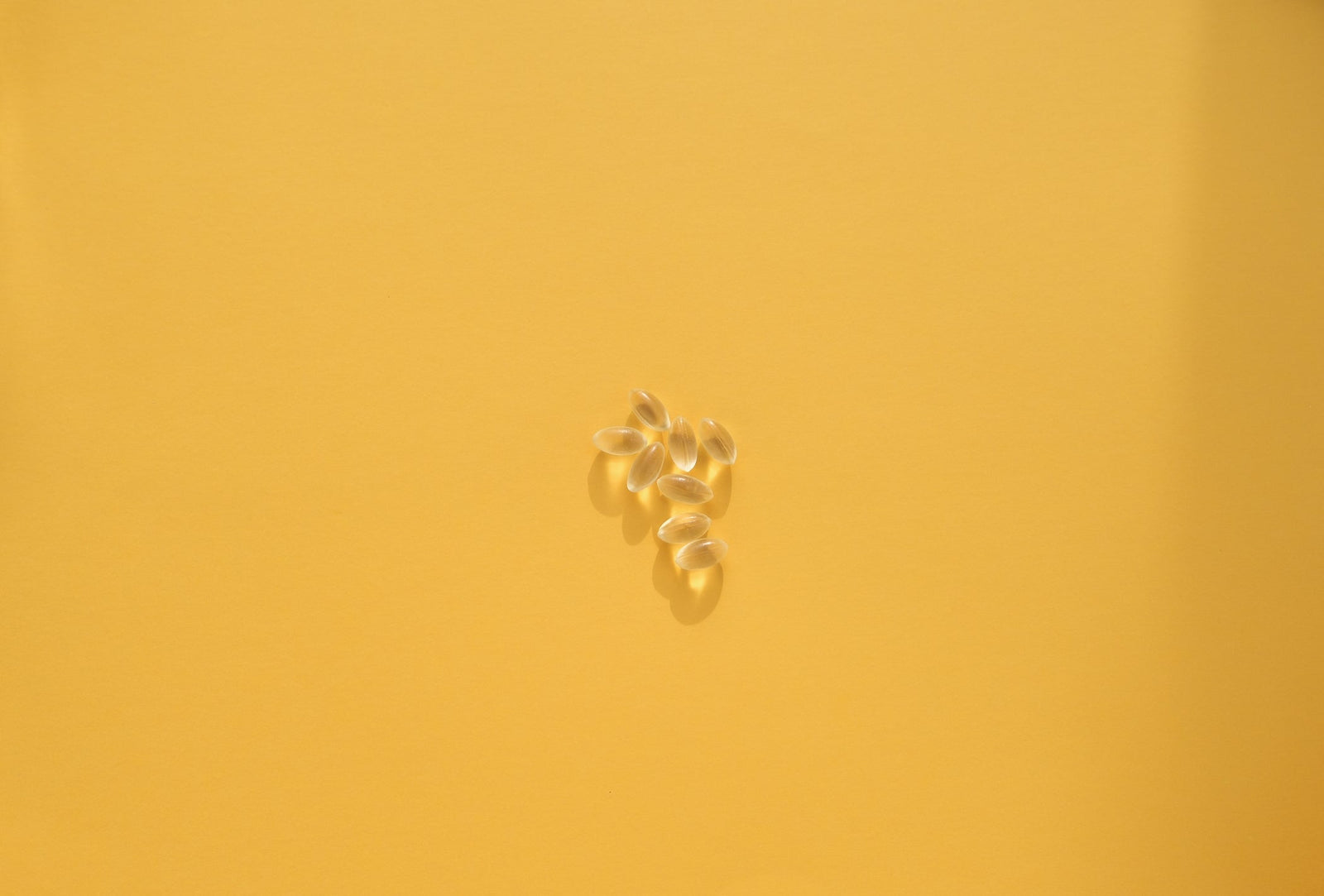Your Cart is Empty

January 03, 2022 6 min read
Take our quiz and find which supplements your body is craving.

Cycle syncing is the practice of tuning into the rhythm of your menstrual cycle and adjusting your sleep, nutrition, physical activity, and schedule to complement your current menstrual phase. The phrase and principles gained popularity with Alisa Vitti's book Woman Code and the release of the MyFlo app she helped develop.

Menstrual cycles last an average of 28 days and menstruation (the bleeding phase) can last anywhere from three to seven days. Tracking your individual rhythm is crucial because the total length of your cycle and the days within each phase are unique.
Although no two ladies are exactly the same, here's an overview of the four major phases of a 28-day cycle with info on changes occurring in your reproductive system and the hormone fluctuations that accompany them.
Menstruation (Days 1-5)
Follicular (Days 6-14)
Ovulation (Days 15-17)
Luteal (Days 18-28)
If you're not currently tracking your periods, it's time to start. You can keep a record in your digital calendar, a health app, or a paper notebook. Consistent information is more critical than the format, so choose whatever method will be easiest for you to maintain.

Cycle syncing is about more than predicting what day your period starts. You'll want to log physical, mental, and emotional symptoms throughout the month, along with energy levels and any anomalies. The more you observe, the more in tune with your body you'll become as you grow in self-awareness.
When you observe how your lifestyle and cycle are interconnected, you can adjust your schedule and habits to capitalize on high-energy phases and understand that sometimes you need more rest, less intense workouts, and nourishing foods in your diet.
Consider how cycle syncing affects your lifestyle in the areas of:
Rest & reflection are ideal during the menstrual phase. You may feel more analytical during this time. Take note of your insights, ideas, and plans. Since your energy level may be low, give yourself more rest and enjoy low-intensity workouts like walking, yoga, or Pilates.
During your follicular phase, you may experience a burst of energy and creativity. This is the time to brainstorm, challenge yourself, tackle a new workout and increase the intensity. Although you may experience an energy surge, you still need downtime and 7-9 hours of sleep every night–remember to pace yourself.
Your natural energy level and libido will peak when your ovulatory phase rolls around. Because this is the critical time for fertilizing an egg, your body is sending biological signals to make you attractive in every aspect (whether you're trying to get pregnant or not).
This is your time to shine and the ideal window for communication, social activity, and sex. For your workouts, focus on strength and endurance routines. You may find you have the energy for longer fat-burning workouts; just be sure to avoid overheating and properly cool down.
Hormones peak at the beginning of the luteal phase then fall, and PMS symptoms may rear their ugly head. With all the fluctuating hormones at play, take time to set boundaries, rest more, focus on completing tasks, and take care of yourself.
You may have more energy for exercise the first few days of the luteal phase, but need to taper as the week progresses. Be sure to listen to your body and keep moving in a way that supplements your energy and doesn't drain it.

Good nutrition is one of the best ways to support your body through every phase of your menstrual cycle. With hormone levels rising and falling, your micronutrient and macronutrient needs will also vary. Pay attention to your cravings and make sure that throughout the entire month you're eating vegetables and fruits, avoiding processed foods and sugar, and drinking plenty of water.
According to FloApp, the menstrual phase is the time for soups and stews, proteins, fasts, and low glycemic veggies. Here are some key nutrients to replace minerals lost in menstrual blood, combat fatigue and nervousness, and reduce cramping and inflammation.
If you experience heavy bleeding, research has shown that Boswellia Serrata (Indian Frankincense) can decrease the amount and length of bleeding during menstruation.
This supplement is also helpful with dysmenorrhea. Menstrual cramps (dysmenorrhea) are common for many women around their period. Cramping can be caused by excess levels of prostaglandins, which are linked to inflammation. Instead of taking an over-the-counter anti-inflammatory medication, natural remedies like Boswellia Serrata extract can help reduce inflammation and pain.

The follicular phase and its accompanying rise in hormones technically start with menstruation. As you transition out of the bleeding phase of your period and FSH increases, be sure to incorporate the following foods to help with sustained energy and healthy digestion.
Sugar cravings may increase during the ovulatory phase. Instead of processed sugar and high-fat desserts, enjoy antioxidant-rich dark chocolate and healthy sweet treats like dates and fresh and dried fruits.
To promote gut health and regulate the digestive system, drink plenty of water and eat fiber-rich foods to help ease bloating, prevent constipation, and promote bowel regularity. Fiber, leafy greens, and glutathione also support liver detoxification.
One study found that regularly menstruating women between 18-44 years old had a significant increase in appetite and cravings for salty foods, sweet foods, and chocolate during the late luteal phase. Data also showed an increase in animal protein intake during this phase. Sugar cravings may be a sign that your body needs more magnesium and calcium.
Research shows that omega-3 fish oil supplements were more effective than ibuprofen to treat dysmenorrhea (painful cramping) before and at the start of the menstrual cycle.

Your body has changing needs throughout your monthly cycle. As you tune in to your personal rhythm, you can take better care of yourself and improve your energy levels and immune function with the right level of rest, activity, and tailored nutrition.
Whenever possible, use healthy foods and all-natural supplements like vegan omega-3s, Boswellia Serrata, and glutathione to lower inflammation and improve imbalances.*
-Stephanie Hodges, MS in Nutrition and Exercise Science
Cycle syncing is the practice of tuning into the rhythm of your menstrual cycle and adjusting your sleep, nutrition, physical activity, and schedule to complement your current menstrual phase.
Menstruation (Days 1-5); Follicular (Days 6-14); Ovulation (Days 15-17), & Luteal (Days 18-28) Phases.
Cycle syncing is about more than predicting what day your period starts. You'll want to log physical, mental, and emotional symptoms throughout the month, along with energy levels and any anomalies.
What to eat & how to supplement during each phase of the menstrual cycle for healthy hormones & energy.
Menstrual cycle. https://www.betterhealth.vic.gov.au/health/conditionsandtreatments/menstrual-cycle
Fertility Awareness-Based Methods of Family Planning.https://www.acog.org/womens-health/faqs/fertility-awareness-based-methods-of-family-planning
The effect of frankincense (Boswellia serrata, oleoresin) and ginger (Zingiber officinale, rhizoma) on heavy menstrual bleeding: A randomized, placebo-controlled, clinical trial. https://pubmed.ncbi.nlm.nih.gov/30670277/
Changes in macronutrient, micronutrient, and food group intakes throughout the menstrual cycle in healthy, premenopausal women. Comparison of the effect of fish oil and ibuprofen on treatment of severe pain in primary dysmenorrheahttps://link.springer.com/content/pdf/10.1007/s00394-015-0931-0.pdf
Comparison of the effect of fish oil and ibuprofen on treatment of severe pain in primary dysmenorrhea: https://www.ncbi.nlm.nih.gov/pmc/articles/PMC3770499/

April 08, 2025 7 min read
Discover the powerful trio for graceful aging—Vitamin D3+K2 and Omega-3 fatty acids. This dynamic combination supports bone strength, heart health, immune function, and reduces inflammation, helping you maintain vitality and well-being as you age.

March 20, 2025 8 min read
Discover the benefits of creatine for women with Amandean’s Creatine HCI. Improve strength, energy, recovery, and cognitive function with this high-absorption formula. Its advanced HCl form ensures easy digestion and no bloating, providing all the benefits without the drawbacks. Elevate your fitness journey and overall wellness with a supplement designed for women’s unique needs.

March 03, 2025 7 min read
Discover how Bryan Johnson, a tech entrepreneur turned biohacker, uses cutting-edge science and personalized genetic testing to revolutionize health and longevity. Learn how biohacking, from diet to mental health practices, can help you live longer and healthier, with practical strategies to optimize your well-being. Find out more about genetic testing, and ways to implement results into your wellness routine.